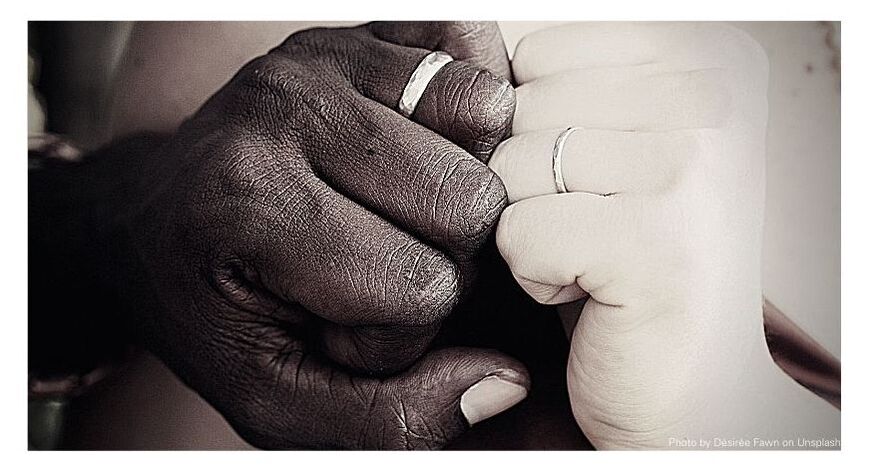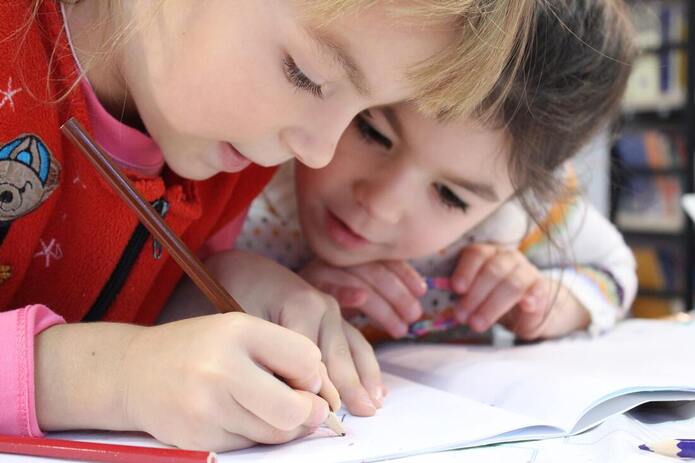|
We decided to move back home after our son was born. I couldn't wait to be back in Helsinki closer to my mother and relatives. I knew we were doing the right move especially due to the fact that my kids would be in much better schools. Little did I think of my husband, my Bahraini husband, who has only ever just visited Finland for the holidays that were filled with fun, excitement and free of worry. Those visits that every relative and friend of mine tries to meet us before we would leave again. Finland was an exciting, fun and very friendly place he always thought. My husband was raised in a huge family. He, his six brothers and all 40+ cousins were constantly together. His parents were always available for support and advice, and so were his elder brothers, aunts, uncles and even his cousins. No one was left behind without all the support, to help them up again on their feet. "During the most difficult days, I remind myself of what my mother taught me; don't give up, always believe after every fall there is a rise. When you reach the bottom, there is only one way left to go, up." - Ali Dadi I moved to Finland sometime before my husband as to get an apartment and so our elder daughter would start school. When my husband moved, he was so happy to know he could spend six months with our baby boy before he would turn three and join the education system. My husband expressed his amazement, for a country to give such an opportunity, being able to reconnect and close the distance that grew between him and his son whom he had missed while he was away. Soon our son was at day care, my husband was placed with an unsuitable group by the Employment Office (TE-toimisto) and he started drifting away in front of my eyes. He was absent minded, tried to join conversations but was too sensitive to talk about anything, and turned from a healthy race driver into a very poor shape. He was a walking dead man who looked like my husband. I was never so worried as I was then.  Before summer he managed to find a suitable integration study program and convinced the Employment Office to let him take a part in it. Suddenly he was with similarly educated people from all around the world. He started to get out of that scary place. He was also called for few races in Morocco, France, Italy, Dubai and Oman, so he got to see his racing buddies. By mid-summer my old husband was back and we were able to talk at last. He tried explaining the feelings he had. He started crying and explaining that he is so disappointed in himself for being so weak. That was the moment that it hit me, how many men are raised up to think that feeling is weak. My beloved husband needed to know he was the most amazing man but he is a human being too. He never realized that he had the right to look at his own feelings, his own happiness and well being. And that does not make him any less manly nor weak. We discussed and he agreed that he might need help before next winter. As a Finn who has lived most of my life outside of Finland I did not know other than the healthcare centre to seek help for him. "The most difficult thing for me was, that I did not know how long will this take, but I did know it has to end sooner or later." - Ali Dadi My husband was raised in a psychologically smart family, so he never needed a professional psychologist's help. When his friend died in a burning race car in front of his eyes, he found all the support he needed to bounce back from that trauma. When my husband was stuck under a car and burned 2/3 of his back, his family's support helped him through that too. He always had help naturally, spoke of his pain and was supported with no fancy disorders names that physiologists give. He did not even know what depression really was. Until that winter in Finland.  He entered the doctor's room. He said: “I suffered from depression last winter, and now as winter is approaching, I want to prevent falling back to the same depression again. All I need is a counsellor to talk to because I feel lonely, and I feel that I have no one on my side.“ To which the doctor replied: “You can't know what you need, if you had depression and are talking about it, it means it was a very mild one and so I can describe you something you take if you feel depressed next time.” My husband refused the medication and came home to tell me what happened. He felt attacked when his psychological intelligence was disrespected. We diced to try to find other ways to find him help. We got to the GYM together, I listened to him whenever he needed to talk, and we tried to survive that winter together. He did face difficulties, but it was much better than the winter before. Before the end of the winter we attended Mental Health First Aid (MHFA) training course. That course proved to him how psychologically educated, smart and aware he was naturally. He was one of the strongest people in understanding that course. Everyone saw it and praised his intelligence. "All I need is a counsellor to talk to because I feel lonely, and I feel that I have no one on my side.“ - Ali Dadi Now as a wife, I have to stand and shout as loud as I can "Men's mental wellbeing matters too". I see communities so busy caring about the children's mental wellbeing and the mothers' mental wellbeing and divorced women's mental wellbeing but rarely have I heard of men's, they do exist but rarely heard of and when needed we didn't know how to find them. Don't get me wrong, I think everyone's mental wellbeing is important, but we should not forget the men. Men have been taught to be strong, not cry, work hard, not complain and many have been taught to not get weak and ask for psychological assistance. We have to change this stereotyping. We have to embrace men as human beings, not as robots programed to keep it together and fix every broken thing at home. Because sometimes it's him who needs helping to fix something broken, and there is no shame to allow him to ask for that help. "I was never ready to give up my love to this amazing man, so I knew we had to find away through this!" From the experience I learned to listen to him instead of only talking and asking him to listen to me. I learned how to be patient and give him time to figure out the feeling he is going though. And learned how to read his need of a hug or a touch when he needed that too. He moved to Finland for me and for our children so this is the least I could give him in return, be there for him. My husband is all good, and almost got used to the Finnish style of life, and he made few friends, which helped him a lot. But I wish we knew about the peer support groups that are offered. I found out about father's group that gather in Familia ry for years, just few weeks ago. That would have been just what he needed in those lonely dark days. "We have taken this decision to walk through life together, so we have to always remember to wait for the other one and hold hands on the rough surfaces." Men's mental wellbeing matters too.
Nora Dadi
Imagine being asked, What is being heard? "Mitä kuuluu!" And the response, Good. “ Hyvää, Kiitos.” Thank you. But the question, “Mitä kuuluu?” is “What hears?” literally. "Entä sinä?" And, you? "Ihaan hyvää, kiitos." Yes, perfectly well, thank you. Like saying, one hears good things. Except, that they are not responding about the functionings of their auditory senses, but, they are telling you that they are doing well. Which is what they asked you about in the first place… “Mitä kuuluu?” Do you hear well, What is being heard?
Also, in the olden days, when calculators helped people do their math, a calculator was also called an aasin silta. Maybe, just maybe, because the user could not make the connections between those unrelated numbers? It is nice to see how they use English words and add an “i” to the end of some words to make it their own. So, logically, hotel is hotelli, bus is bussi, and so on. But, you can’t extrapolate a word and think you know the meaning, especially when “porkanna” is not pork but the humble carrot. How about trying to say kaHvi for coffee (make sure you aspirate the “h”, tough one ain’t it?) and then having to say kofeiniton when you want caffeine-free? The suffix “ton” meaning “without”. That ton of logic beats me. Why not simply say “koffii” instead of making poor English speakers gasp for air while struggling to get the “h” aspirated. It does not help either, that the word for the pope is not aspirated and is just a long paavi. One has to pronounce the “aa” diphthong. If one doesn’t, there is not much else to distinguish it from its less-worthy cousin, the word for cardboard, pahvi. And listeners be-warned, especially, if I have not done my breathing-out exercises. "Yeah, I have the vain glory of being the one to make people think I am making pontifical statements, when all I was referring to, was some poor piece of cardboard that was in the rubbish bin!"  Picture Photo by amirali mirhashemian on Unsplash Picture Photo by amirali mirhashemian on Unsplash Or, how about going into a burger joint and being greeted with Tuuna burgerisi?.. which I quite innocently thought meant “D’ya want a tuna burger?” Only to realize it was their clever usage of English, though not in the way you’d imagine. And, so my days in this land are days of discovery and laughter. There is always something that can “Tul-la pus-kis-ta.” Something can come out of the bushes, a surprise that can get sprung on you. Just like when I did a double-take — when I was told that what I had proposed -- fitted like a fist in the eye! I thought they meant that I had given them a sock in the eye! Seems, I could relax after all. All it harmlessly meant was that the proposal suited them perfectly. And that is perhaps, how I came to be with my Finnish man. Yes, the proposal suited me fine, just like a fist in the eye, sopia kuin nyrkki silmään. Mary Ann Alexander Published in Duo blog with Mary Ann´s permission First published in Mary Ann´s personal blog
Perhesiteen perusteella oleskelulupaa odottavalla henkilöllä ei ole työnteko-oikeutta Suomessa ennen luvan saamista. Ulkomaalaislaki (§ 79) määrittelee ne ulkomaalaiset, joilla on työnteko-oikeus ilman oleskelulupaa. Perhesideperusteisen luvan odottajat eivät tähän ryhmään kuulu.
Olimme molemmat henkisesti valmistautuneet ja sitoutuneet yhdessä tiukkaan taloudelliseen tilanteeseen prosessin odotusaikana. Itse ajatteli sen kestävän ainakin vuoden. Tietenkin toivoimme sen olevan ohi nopeammin, saavamme oleskeluluvan, puolisoni pääsisi töihin ja voisimme aloittaa niin sanotusti normaalin elämän. Tiukka talous vaati suunnittelua, asioiden priorisoimista. Onneksi olin jo vuosia tottunut yksinhuoltajana selviämään pienillä tuloilla. Tärkeimmät laskut huolehdin ensin. Ruokaa varten laskin viikkobudjetin, jolla piti selvitä. Kaupassa yritin käydä kerran viikossa, jotta turhat heräteostot jäisivät pois. Puolisoni kokkasi lähestulkoon kaikki ateriamme. Pääasiallinen ruoka-aine oli riisi, jota ostimme edullisesti 10 kilon säkeissä etnisestä ruokakaupasta. Joka kuukausi varasin myös pienen summan yllättäviin menoihin esim. lääkkeisiin. Jos yllättäviä menoja ei tullut, säästin rahan perheeni hemmotteluun kuten ulkona syömiseen. Omat vaatteeni olen jo vuosia ostanut pääasiassa kirpputoreilta, kenkiä ja alusvaatteita lukuun ottamatta. Puolisonikin suosi mielellään kirpputoreja. Haasteena oli merkkivaatteisiin mieltynyt, jalkapalloa pelaava teinipoikani. Puhuin hänelle rehellisesti rahatilanteestani ja päätimme, että hän saa lapsilisät käyttöönsä kuukausirahana. Isommista hankinnoista keskustelimme yhdessä. Hankalinta oli, kun ei tiennyt miten kauan tilanne kestäisi. Elimme kuukausi kerrallaan ja yritti olla ajattelematta asioita liian pitkälle. Välillä tilanne kuitenkin stressasi ja aiheutti pientä kireyttä suhteeseen. Huolta lisäsi myös pelko negatiivisesta päätöksestä. Silloin otimme aikalisän arjesta ja pidimme treffi-illan kahdestaan hyvän ruoan ja Netflixin kera. Kun päätös lopulta tuli ja oli myönteinen, en käsittänyt miten paljon se tulisi muuttamaan meidän elämäämme. Vain muutama viikko oleskeluluvan saamisen jälkeen puolisoni oli jo töissä ja kaikki oleskeluluvan saamiseen liittyvä byrokratia eri tahojen kanssa oli hoidettu. Arki muuttui nopeasti normaaliksi työssäkäyvien aikuisten arjeksi. Parasta oli nähdä, miten toinen ihminen muuttui tilanteen myötä väsyneestä arjen läpi raahautujasta, aktiiviseksi ja energiseksi toimijaksi. Miten hyvältä molemmista tuntui, kun ensimmäisen kerran jaoimme kuukausimenot puoliksi ja itselläni jäi rahaa myös säästöön pantavaksi. Uskalsimme myös alkaa haaveilla tulevista yhteisistä matkoista ja tehdä tulevaisuudensuunnitelmia. Anu Kytömäki Rinnallasi-hankkeen projektityöntekijä ja kokemusasiantuntija Hitautta ja jännitystä - Perheenjäsenen oleskelulupaa odottaessa kuukaudet tuntuvat vuosilta25/3/2020
Oleskeluluvan odottamiseen liittyvä stressi jättää jälkensä. Eteläaasialaisen puolisonsa kanssa Helsingissä asuva Hanna kertoo: ”Kotimaassaan odottavalle puolisolleni oli jo viime vuonna myönnetty oleskelulupa, kun sain ilmoituksen Maahanmuuttovirastolta tulleesta kirjatusta kirjeestä. Sain siitä lähes sydänkohtauksen. Postitoimisto oli siltä päivältä jo kiinni ja jouduimme odottamaan aamuun asti, jolloin juoksin postiin. Kirjeessä olikin vain valokuvat, jotka olimme toimittaneet Migrille oleskelulupahakemuksen käsittelyn aikana ja jotka virasto nyt palautti. Ei siis yhtään mitään, mutta oleskelulupaprosessin aikainen pelko iski takaisin. Pelkäsin, että jospa hänen lupansa on peruutettu tai he haluavat vielä jotakin lisätietoa.” Paperisota jatkuu “On vaikeaa elää erossa. Jos toisella on vaikeaa, sille ei voi tehdä mitään puolin eikä toisin." Oleskeluluvan odottamiseen liittyvää pelkoa ja epävarmuutta on vaikea ymmärtää, ellei itse ole ollut samassa tilanteessa. Osa ulkomaalaisista puolisoista odottaa oleskelulupapäätöstä kotimaassaan. Osa elää jo Suomessa puolisonsa kanssa yhdessä. Tämä on saattanut tulla Suomeen alun perin esimerkiksi turvapaikanhakijana tai jollakin muulla perusteella. Hanna ja hänen puolisonsa Abdul ovat tavanneet Suomessa, jossa IT-alalle valmistunut mies oli vaihto-opiskelijana. “On vaikeaa elää erossa. Jos toisella on vaikeaa, sille ei voi tehdä mitään puolin eikä toisin. Toisaalta, jos meillä olisi ollut täällä jo koti ja kaikki yhdessä rakennettu, pelko kaiken sen menettämisestä olisi saattanut olla vielä pahempi”, Hanna sanoo. Abdul kertoo, ettei hänen odottaessaan päätöstä kotimaassaan ympärillä ollut ketään, jolla olisi vastaavia kokemuksia. ”Sain olla oma terapeuttini. Minulla on sukulaisia, jotka asuvat Lähi-idässä, Afrikassa ja Yhdysvalloissa, mutta ei ketään, jolla olisi kokemusta Euroopasta tai mitään käsitystä oleskelulupa-asioista täällä. Olen perheeni ensimmäinen ulkomaalaisen kanssa avioitunut. Odotusaika oli ahdistavaa ja nukkuminen vaikeaa, kun ei voi tehdä mitään eikä tiedä mitä tulevaisuudessa tapahtuu.” Valmistauduitteko henkisesti siihen, että päätös voisi olla kielteinen? ”Olen asunut miehen kotimaassa puoli vuotta ja vaikka siellä on ihanaa käydä tapaamassa hänen perhettään, en voisi elää siellä. Menettäisin kaiken minkä eteen olen opiskellut ja tehnyt työtä täällä. Minua pelotti, että päädyn kotirouvaksi hänen kotimaahansa, mies on töissä 13 tuntia päivässä emmekä ikinä näe toisiamme ja minä masennun”, Hanna kertoo. Hän sanoo odotusaikana keskittyneensä täysin siihen päivään, jolloin päätös tulee. ”En paljonkaan ajatellut mitä tapahtuu, kun mies lopulta muuttaa tänne. Nyt huomaa, ettei olekaan helppoa vaan muuttaa aivan erilaiseen maahan ja järjestää kaikki asiat. Näyttää siltä, että paperisota jatkuu, vaikkakin eri asioissa.” Abdul kertoo ymmärtäneensä muutaman Suomessa eletyn kuukauden aikana, että kielitaidon ja työpaikan hankkiminen sekä todellisten ystävien saaminen uudessa maassa vaativat kaikki aikaa eivätkä käy niin helposti kuin monen maahanmuutosta haaveilevan kuvitelmissa. ”On todella vaikeaa olla kilpailukykyinen Suomen työmarkkinoilla tai missä tahansa kulttuurisesti erilaisessa maassa. Täytyy vaan hiljalleen murtaa esteitä”, hän miettii. Kuukaudet tuntuvat vuosilta "En aikaisemmin koskaan kuvitellut joutuvani tilanteeseen, jossa pitäisi todistaa omaa avioliittoaan aidoksi. Kukapa sellaista ajattelisi? " Oleskelulupaprosessin vaikeus tulee monelle suomalaiselle yllätyksenä. ”En aikaisemmin koskaan kuvitellut joutuvani tilanteeseen, jossa pitäisi todistaa omaa avioliittoaan aidoksi. Kukapa sellaista ajattelisi? Vasta vuoden 2015 pakolaiskriisin myötä maahanmuuttoasiat tulivat tietoisuuteen”, Hanna kertoo. EU-kansalaiset voivat rekisteröidä oleskelunsa Suomessa eikä heidän tarvitse hakea oleskelulupaa. Kun ulkomaalainen puoliso tulee EU:n ulkopuolella olevasta maasta, oleskelulupaprosessi on monimutkaisempi, pitempi ja kalliimpi kuin arvaakaan. Prosessin voi käynnistää sähköisesti EnterFinland -palvelussa, mutta käsittely lähtee käyntiin vasta henkilökohtaisen tunnistautumisen jälkeen. Etelä-Aasiassa monet prosessin vaiheet on ulkoistettu VSF Global-nimiselle alihankkijayhtiölle. Suoraan Suomen lähetystön kanssa ei enää voi asioida. Hanna ja Abdul kertovat, että alihankkijayhtiön asiakaspalvelu on erittäin heikkoa eikä yhteydenottoihin tai tiedusteluihin saa vastausta. Abdulilta prosessi vaati neljä eri käyntiä maan pääkaupungissa, jonne matkustamiseen kotikaupungista menee kokonainen päivä. VSF Global laskutti myös yli sadan euron ylimääräisen maksun, josta ei ollut mitään ennakkotietoa. Hakijalle oltiin ensin varaamassa haastatteluaikaa Suomen edustustosta, mutta lopulta Maahanmuuttovirasto peruutti sen ja teki myönteisen päätöksen kirjallisen selvityksen perusteella. Kumpikin puoliso oli vastannut viraston lähettämiin kysymyksiin kirjallisesti. Oleskelulupa myönnettiin lopulta noin viisi kuukautta hakemisen jälkeen, mikä on normaali prosessin kesto oleskelulupaa perhesiteen perusteella haettaessa. Hanna sanoo, että odottaessa kuukaudet tuntuvat pikemminkin vuosilta. "Kysymykset tulevat hyvin henkilökohtaiselle alueelle, kysytään esimerkiksi mikä puolisossasi viehättää sinua. Niin henkilökohtaiset kysymykset tuntuvat kuin hyökkäyksiltä itseäni vastaan." Perhesiteeseen perustuvaa oleskelulupaa haettaessa puolisot joutuvat vastaamaan läheisintä ihmissuhdetta koskeviin kysymyksiin. Päätöksentekijä pyrkii varmistumaan siitä, että hakijat ovat todella jatkamassa perhe-elämää Suomessa.
”Kysymykset tulevat hyvin henkilökohtaiselle alueelle, kysytään esimerkiksi mikä puolisossasi viehättää sinua. Niin henkilökohtaiset kysymykset tuntuvat kuin hyökkäyksiltä itseäni vastaan. Ymmärrän sitä paremmin nyt, kun on vähän etäisyyttä asiaan”, Hanna kertoo. Myös Abdul sanoo, että ymmärtää tarpeen suojella omaa valtiota, mutta kysymykset tuntuivat hyvin henkilöön keskittyviltä. Hän oli olettanut sen riittävän, ettei hakijalla ole rikostaustaa. Hänen kotimaassaan sen selvittäminen on helppoa. Hanna sanoo, että prosessin kuluessa eniten apua oli vertaistapaamisista. ”Ilman samassa tilanteessa olevia vertaisia ei olisi ollut ketään, jonka kanssa reflektoida tunteitaan. Ihmistä, joka todella ymmärtää tunteitasi. Mielestäni se on parempi tehdä jonkun muun kuin oman kumppanin kanssa, sillä hän on ihan yhtä stressaantunut.” Haastateltavien etunimet on muutettu. Haastattelu: Sanna Rummakko Sanna Rummakko toimii projektipäällikkönä Familia ry:n Kuljen rinnallasi -hankkeessa. We make mistakes because we’re human. How we choose to react to and handle these mistakes, however, builds our character and our relationships for better or for worse. I do not claim to know what is best for all multicultural relationships but the advice I give below are the lessons I have learned over time through my own personal experiences. Don’t always assume you know what your partner is “really” saying Words can have many meanings culturally as well as personally. The language we choose to communicate with should be considerate of the other person and sometimes, especially in multicultural relationships, you will have no idea beforehand that something you said, which you thought was harmless, could cause such a negative reaction. People can often be quick to react or feel hurt by certain words or phrases that evoke past negative experiences or feelings. We then cling to those specific elements and forget to listen to understand. We’d rather only listen to respond. This communication breakdown fails to resolve the issue. Without open and clear communication, we stay lost in translation and without compassion, we often fail to give our partners the benefit of the doubt. As an American woman, I feel the English word “sensitive” can be very loaded and is often negatively used to belittle or to make others appear as weak. However, when my partner once used the Finnish word “herkkä” to describe me, which loosely translate to sensitive in English, my response was unnecessarily explosive because in that moment I could not consider how that word could be anything other than negative or even seen as a positive trait in Finnish language. We both had to exercise a lot of patience and compassion to overcome our misunderstandings and better understand one another. If you feel upset by what your partner has said to you, it is important to explain how you feel but to also patiently and compassionately listen to their explanation. Maybe they meant something else entirely or even misused a word, particularly in a language that is not their native tongue. The best advice is to assume less and communicate more. Don’t be unwilling to compromise All relationships require compromise. In our romanticized modern societies, compromise is often seen as the antithesis to romance. However, as Alain de Botton, a modern philosopher, insists (somewhat tragically) that “choosing whom to commit ourselves to is merely a case of identifying which particular variety of suffering we would like to sacrifice ourselves for.” We, as humans, all have our complexities and we only fully start to understand them when we try to love and live with another complex individual. Often these complexities can be polar opposites. Compromise is about learning to negotiate inevitable differences with a more kind, forgiving, and even humorous perspective. If we are not flexible in such a way, relationships will eventually break rather than learn to bend. Don’t lose your curiosity (in your partner) This advice will apply more to couples who have been together for a long time. Our culture, our upbringing is second nature to us and more often in multicultural relationships we frequently learn what is completely normal to us is often entirely foreign to our partner. In the beginning of any relationship we eagerly listen to our partners stories and want to learn everything about them. However, at some point in the relationship we wrongly assume we have done enough “homework.” We believe we have figured out our partner and have very little more to learn. Nothing could be further from the truth. We are always learning, and people change over time. The person you know and love now is not the same person you met years ago. This reality is so easy to forget but vital to remember. After nearly six years together, my partner and I have certainly made our fair share of mistakes, but we always try to follow the advice above. We continuously recommit ourselves to building a relationship we both want to last. Jade Rosenkranz REFERENCE De Botton, A. (2016, May 28). Why you will marry the wrong person. The New York Times. Retrieved from: nytimes.com/2016/05/29/opinion/sunday/why-you-will-marry-the-wrong-person JADE ROSENKRANZ
I am an American and a recent graduate from the University of Helsinki currently living in Helsinki with my Finnish partner and our lovely dog, Luna. Toiset asiat elämässä ovat vakioita. Monikulttuurisissa perheissä ja -parisuhteissa nämä vakiot voivat toisinaan olla toisten mielestä erikoisiakin — ja joskus niitä täysin tavallisia asioita. Sellaisia, joita esimerkiksi kahden samassa maassa kasvaneen ihmisen parisuhteessa ei ikinä käsiteltäisi. Sillä aivan kuten voi kuuluu leivälle ja maa kiertää aurinkoa, kuuluu monikulttuuriseen parisuhteeseen kuin -perheeseenkin kokonainen tunteiden kirjo iloa, kaipausta, riemua, turhautumista ja syyllisyyttä. Monikulttuurisuuden positiiviset puolet ovat monesti esillä, eivätkä syyttä. Onhan minunkin puolisoni antanut minulle paljon, niin monella eri tavalla! Olen päässyt tutustumaan aitiopaikalta aivan erilaiseen maahan; sen tapoihin ja kulttuuriin. Mutta asioilla on myös nurja puolensa — on syyllisyys. Jos minua ei olisi tai emme mieheni kanssa olisi tavanneet, asuisi mies todennäköisesti tälläkin hetkellä Utahissa, kotonaan. Lähellä kaikkea itselleen tuttua — perhettään, ystäviään, tuttuja maisemia ja ruokia — kaikkea sitä, mikä on lähtemätön osa hänen identiteettiään ja käsitystään tavallisesta. Arvokkain lahja, jonka voit antaa on aikasi Aika on kuitenkin maailman arvokkain asia annettavaksi, eihän sitä koskaan saa takaisin. Mies on tehnyt valinnan antaa aikaansa minulle — asuuhan hän nyt pysyvästi Suomessa, minun takiani. Hänen vanhempansa eivät tästä enää nuorru, eivät sisaruksetkaan. Perhepiiri ja ystävät juhlivat syntymäpäiviään, itselle tärkeät ihmiset menevät naimisiin, ystävät pohtivat tuomisiaan illanistujaisiin ja suvun nuorimmaiset täyttävät vuosia. Yksi kuitenkin puuttuu joukosta — siksi, että mies valitsi minut. Puhelut ja viestit ovat kelpo korvike, mutta läsnäoloa ei korvaa mikään Erityisesti kriisitilanteissa olo on avuton. Toki, olemme monessa suhteessa tavallaan onnekkaita — kun vain tilin saldo on riittävä, pääsee jopa pallon toisellekin puolelle vuorokauden lentorupeaman päätteeksi. Olemme kuitenkin vain niin... Kaukana. Kun jotain tapahtuu, me emme ole paikalla ensimmäisinä. Huonoimmassa mahdollisessa tapauksessa kuulemme kaikesta vasta tunteja myöhemmin. Tästä käy kiittäminen kymmenen tunnin aikaeroa Kaliforniaan, jossa valtaosa mieheni perheestä asuu.
Ajassa taaksepäin menemällä voi kuitenkin alkaa asettaa asioita paremmin perspektiiviin. Kun siirtolaiset lähtivät Euroopasta kohti Amerikkaa, heillä oli edessään pitkä laivamatka ja määränpää oli lähestulkoon tuntematon. Kirjeet tulivat ja menivät — hitaasti. Kun kotipuolesta lähetettiin tieto vaikkapa läheisen sairastumisesta, tieto saattoi saavuttaa kuulijansa vasta aivan liian myöhään. Toisaalla taustalla jäyti varmasti myös tieto siitä, että paluu omaan kotimaahan ei välttämättä koskaan olisi todellinen vaihtoehto. Vaikka olemmekin fyysisesti kaukana, on meidän nykyään helppo pitää yhteyttä miehen perheeseen, pitkästä välimatkasta huolimatta. On ilmaisia nettipuheluita äänen kuin videonkin kanssa, tekstareita, kirjeitä ja valokuvia. Niin, ja ne sujuvat lentoyhteydet! Maailma on kutistunut jo sadassa vuodessa enemmän, kuin kukaan olisi voinut varmasti edes kuvitellakaan. Uhraukset ja kompromissit ovat monikulttuurisen parisuhteen kulmakiviä Silti, en voi olla potematta syyllisyyttä — mieheni valitsi minut, eikä tämän valinnan hinta ollut halpa. Hän asetti minut, meidät ja parisuhteemme tärkeysjärjestyksensä kärkisijalle. Erityisesti niinä synkempinä päivinä olen usein punninnut asioita mielessäni. Miettinyt sitä hetkeä, kun halasin miestä Helsinki-Vantaan tuloaulassa kesäkuussa 2015 — kuinka se hetki oli monella tavalla käännekohta meidän molempien elämissä. Aina siitä hetkestä eteenpäin aloin kantaa sisälläni syyllisyyttä siitä, että olin repinyt niin monelle tärkeän ihmisen luokseni monien tuhansien kilometrien päähän. Useimpina päivinä olen asian kanssa sinut, sillä tiedostan, etten pakottanut miestä Suomeen. Ja sitten taas, toisinaan... Toisinaan syyllisyyden tuska on todella raastavaa. Monikulttuuriset parisuhteet vaativat uhrauksia, aina. Ja toisaalta, ehkä juuri näissä lukuisissa uhrauksissa ja kompromisseissa on monikulttuuristen parisuhteiden liima — oman puolisonsa läsnäolo ei ole koskaan ollut itsestään selvää. (Asta Buchanan) ASTA BUCHANAN Asta Buchanan on suomalais-amerikkalaisen perheen äiti, matkalla tasapainoon kahden kotimaan kuin -kulttuurinkin välillä. Koti sijaitsee nyt Suomessa, kaipuun Kalliovuorten kupeeseen kulkiessa rinnalla. 'Kahden maan kansalaisia' -blogissaan Asta kirjoittaa arjen monikulttuurisuudesta ja siihen liittyvistä ilmiöistä sinivalkoisten lasien lävitse — mutta alkaako joukkoon sekoittua myös punaisen sävyjä tähtineen ja raitoineen? Voit tutustua Astan blogiin 'Kahden maan kansalaisia' täältä! My Spanish-Catalan-Finnish-Colombian combo has now been living in Finland for about half a year. We moved from a town near Barcelona to a town in southern Finland, close to my parents. We’re enjoying the snow and the reasonably mild winter weather. We have had our ups and downs, but mostly it has been smooth sailing. Our children seem to be adapting to their new environment with relative ease. They miss Spain but life in Finland doesn’t seem so bad either - not for now, anyway. Our lives are somewhat uneventful but right now we’re happy that way.
Perhaps the biggest event for us in the past few months was Christmas. Our son got a set of collectable football cards for Christmas. Each card has a picture of a player, their skillset, team and home country. The other day, as we talked about where each football player was from, I asked our 6- and 7-year-old children where they themselves were from. My question in Finnish was “Minkä maalainen sinä olet?” which literally refers to nationality and country rather than origin. Still, their answer was clear as day: both said they were Spanish. Now, here’s the thing: our children don’t have a Spanish passport. They were born and, until half a year ago, raised in Catalonia, Spain, but officially they are not Spanish. Even in Spain, they were foreigners, born to a Colombian father and a Finnish mother. Did that matter to them? No. Home as they know it is in Spain, so that’s where they’re from. In saying they were Spanish, my children made me both delighted and a little bit sad. Delighted because clearly they have an idea of self, home and roots. Sad because I feel that our transition and integration to Finland has gone well, that the children’s Finnish is improving in leaps and bounds, and that they have made friends. This winter they have even started to learn all the seasonal quirks Finnish children have to deal with - how to slip almost effortlessly into a snowsuit (“Äiti, I look like an astronaut!”), how to stay up on skates and skis, how to sing more than one or two Finnish Christmas carols. Surely these experiences are proof that they are starting to feel at home in Finland? I held onto these small victories as justifications that we had done the right thing in moving countries. I was also a little bit sad about my children’s answer because I too have felt that home is somewhere other than where I live, and I know it’s not always easy to deal with such a complex feeling. I badly want them to feel at home where they are. But 6 months is a very short time in a new place - it can take years to start feeling at home in a place, even for children who we tend to think adapt to change quickly. I should know - I lived abroad as a child and I’m still unsure of where home is. Your home is often defined by a document saying where you are from. These documents may give you certain freedoms, or restrict where you can travel. For many official purposes, these documents do matter. They also matter in politics, whether you want them to or not. A passport can also give you a sense of belonging - an idea of where home is. But right now, and perhaps for the rest of their lives, what defines home for my children is the place they first knew as home, even if they were born foreigners to that place. It’s not a new phenomenon and it’s not unique to my family. People have moved across borders throughout history. Diasporas, refugee camps and multilingual families like ours provide continuous proof of that. How, then, can we support our children who have left their home behind? I wish I knew. In our case, we are trying to keep up their Spanish language skills, stay in touch with their friends and, when the time is right, we'll visit our former hometown. But will that be enough for them to feel like they are connected to their Spanish home? I don’t know. Fortunately, my daughter has a backup plan: she says we could transport our old home in Spain to Finland. So if push comes to shove, maybe we’ll just have to do that. (Reetta Savolainen) “Is there anything in particular you would like us to know about your children?”
We had recently moved to Finland, and were visiting our children’s new school, both excited and anxious about having them start in the prestigious Finnish school system. The teachers were giving us a tour of the state-of-the-art facilities, when they asked us the question. There were plenty of things I wanted the teachers to know about our 6- and 7-year-old children and about our family. But I hardly knew where to begin. We had left our home, friends and life in the Mediterranean for new opportunities and closeness to family in southern Finland. Our honeymoon period in Finland was just ending after a couple of months of enjoying an unusually warm Finnish summer. We had eaten copious amounts of ice-cream and strawberries, swum daily in the nearby lake, and we were even getting used to the sound of Finnish silence. When we first started to seriously consider moving to Finland, it seemed like a no-brainer: the Finnish education system is possibly the best in the world, Finland is a safe country - we adopted many of the usual arguments that families use to convince themselves to moving to Finland. We had visited Finland regularly enough that, although our children and my husband had never lived here, settling in to a town we knew from our holidays didn’t seem like too dramatic a change. Of course, the thought of leaving our friends and the Mediterranean way of life made us sad and occasionally even doubt our decision. But we found ourselves reasonably content in Finland from day one, largely thanks to my parents who helped us settle in. So, although I was a little disappointed that my son hadn’t immediately fallen in love with the taste of blueberries yet or that my daughter didn’t love red currant juice (all those vitamins!), I could deal with the small cultural glitches. We had discovered that people weren’t as cold and distant as everyone claimed they were - we had already had several lovely encounters with strangers on the beach and in the park, which reaffirmed my belief that we would all find friends eventually. Nobody seemed too taken aback by my husband’s dark beard and loud (by Finnish standards) voice. Even though most people still responded with a blank stare when I greeted them on my morning walks in the forest, it wasn’t a problem - I’d made it my mission to make them eventually come around. Even the tedious task of sending out numerous job applications and the prospect of perhaps having to start my career from scratch didn’t seem too daunting. What I was concerned about was language. Before moving to Finland, our children already spoke reasonably good Finnish, considering they had never lived in Finland and had no Finnish-speaking friends in Spain. Only days after moving to Finland, they started absorbing funny little expressions like tavallaan (“in a way”) and toki (“certainly”) from those around them. However, their strongest languages in Spain were Spanish, their father’s first language, and Catalan, the community language. Also, they were exposed to English at home every day as it was the language my husband and I spoke to each other. How were they going to keep up all the languages? How were they going to keep up their Catalan when even their Spanish was slipping only after a few weeks? And what about their English - we didn’t want them to lose what they already knew, but my husband also needed to start learning Finnish - how were we going to juggle the potpourri of languages? Was it even worth it? There were plenty of things I wanted to tell the teachers about my children’s language skills and cultural influences, but what exactly? Should I tell them about the language thing - that our children were - for lack of a better expression - trilingual and a half? Or perhaps bilingualish? Should I tell them that so far they had been growing up between at least four or five different cultures - Finnish, Colombian, Spanish, Catalan and that of an international immigrant community? Should I tell them that they knew the song “Sata salamaa” almost word for word but they didn’t know if Vesa and Aino were a boy or a girl’s name, or that I had to explain what välkkäri and lukkari were? Or that they knew how to use the expression sikahyvä but also struggled to correctly conjugate everyday verbs like tykätä and lukea? How was I to tell the teachers about the mishmash of languages and cultures that constituted our family without putting them to sleep? I didn’t know, so to keep it simple, I just told them that they were bilingual and said we would love for them to do extracurricular Spanish, and if they needed to do S2 instead of the usual äidinkieli, that was fine. I don’t know if omitting the details really mattered in the context of a Finnish school. It mattered to us, but it seemed too complicated to get into. I decided that I could always bring up the language-thing during our first official parent-teacher chat later on. Language is complex. Even though people often say that children are sponges and learn languages immediately through immersion, even they have to readjust. Our children are still learning to differentiate between kärpänen, ampiainen and hyttynen. Their go-to language when they play together is still Spanish - at least for now. As a multicultural and multilingual family, we’ve only just begun the process of adapting our communication as we settle into our new lives in Finland. We still don’t know how our children’s relationship to their various languages will evolve over time. So, yes, it’s complicated. But for now, I take comfort in the caption under our 6-year-old’s self-portrait on his eskari wall. His teacher interviewed him and wrote down what he wanted to tell others about himself. The caption states our current language situation perfectly. It says: “In my family, we speak Finnish, Spanish and English - tavallaan.” (Reetta Savolainen) “Olen turhautunut”. How many foreigners want to answer that every time someone asks them, politely, how things are going in Finland?
I am frustrated. Hear me out. I am not frustrated by the impossibly long integration process. I am not frustrated by the bureaucracy. Not by the cold, the darkness or the job market situation. And not even by the mämmi that my Finnish partner stocks up in the fridge and tries to make me eat. I am facing the worst frustration you can imagine. The one that so many foreigners, immigrants, intercultural family members feels. The hardest one to tackle because it is so personal and challenging. And yet, the one that everyone, immigrants, partners, NGO’s and government should invest time and attention in: being frustrated with yourself. First, when it comes to do and observe the basic things of life. That Finnish mechanism, that makes it impossible for you to open the window as you would like to. The bus machine. How the weather changes and you never know if you should wear two coats or not. How you wont find wine in the supermarkets. Or how, really, you can’t use your sauna as a drying place. All those little things, that you don’t even think about when you live in your own country become a real hassle here and endanger your own well being and self-esteem. It may sound odd, but I promise that a daily struggle with a simple window does make you feel really helpless. Second, by your inability to actually know and understand people. In your home country, you know at what time it is the smartest to send an email. You know if you can call again without being rude. Whether or not to smile, answer with words or body language. You know when to tell your joke, the topics that are off limits with strangers and close ones. But how does an immigrant get to know all these things in a new country? Having a Finnish spouse helps immensely. But even though, how do you grasp the nuances that will make you go from clueless and frustrated to fitting and at ease? It’s only after having made a bad joke and smiled in the lift to your neighbour, spent 3 or 4 winters in Finland, that you can learn. That frustration, caused by your own limits has another source, often extremely difficult to face : time. Integrating and adapting takes time and accepting that you don’t have any power on it is frustrating. Third, every time that you can’t communicate. You dreamt about verbityypit yesterday and you don’t even bother anymore to answer when a Finn says “Finnish is so hard. Did you think about maybe learning Swedish?”. Because yes, of course you did. You downloaded Duolingo, and felt so empowered when you recognised immediately that “äpple” was apple and “banan” was banana. And yet, here you are, afraid to open your mouth at Alepa because you know the second the cashier hears you, he will switch to English. It is frustrating. Because it takes so long. Because you don’t see any progress. Because you question wether you really need it or not. Because you constantly forget that one word that you use li Here you are, frustrated immigrant, unable to plan, kind of hating yourself more or less all the time. Sending application through the TE website without even believing it would work. Asking your Finnish friend to read your cover letter and seeing the anxiety in his eyes while he reads. Because he doesn’t know how to explain that there is a difference between “työ", “töissä", and “työssä”. The most critical phase regarding frustration in the integration process is that moment towards adaptation, when you won’t feel clueless anymore in most of the situations. Until then, you might feel frustrated when you face a situation that feels new but that you have already faced before. You’re frustrated with yourself because you are not adapted but feel like you should be. Therefore, to deconstruct self-frustration, here are my 5 advice: 1. Address the “to do” frustration by dealing with your own perception of time.
2. Address the “to know” frustration by working on your goals.
3. Address the “to observe” frustration by observing … yourself first.
4. Address the “to communicate” frustration by focusing on your achievements.
5. Understand the meaning and use of frustration.
And guess what? Frustration is a - healthy- sign that you are actually learning and going forward. Instead of the Finnish language, let's take my favorite example : the beloved Finnish window. Here are briefly what the four stages of competence are: Unconscious incompetence: I don’t know that I can’t do it. I move in my new home, I like my big windows and how they bring in so much light. Conscious incompetence: I know that I can’t do it. The sun shines. I want to open them and get fresh air in. It is blocked. I spend 15 minutes trying to understand how that lock works. I fail pathetically and ask my Finnish partner to open it for me. Which he does, in 4 seconds. Conscious competence: I know how to do it if I am focused. After having observed my spouse doing it a thousand times, I can open the window. If I take my time. And if I’m in a good mood. And if I move slowly. Unconscious competence: I know how to do it and don’t even think about it. It’s warm - try to picture it for the sake of my demonstration-, I go to the window, open it, end of story. Now, notice that frustration appears at stage 2. This is the critical moment where many people give up, don’t have the tools to keep observing and trying. They drop it because they don’t take the time to understand that frustration is part of the whole process of integrating. We are all, as immigrants, in the 4 stages of competence at the same time. Use these 5 tools, and let us know what are your frustrations and how you deal with them! And until then, if you see me walking towards a window, get ready for a lot of swearing. (Grace Ondo) |
blogi - blogAjatuksia ja kokemuksia elämästä kahden kulttuurin keskellä.
Reflections and experiences from the life of intercultural families. kategoriat
All
osallistuToivotamme sinut lämpimästi tervetulleeksi osallistumaan blogiyhteisöömme: lue, kommentoi ja kirjoita!
Kirjoittajina voivat toimia kaikki kahden kulttuurin arkea elävät ja aiheesta kiinnostuneet. Kynnystä kirjoittamiselle ei tule nostaa liian korkealle ja kirjoittaa voi joko omalla nimellä tai nimimerkillä. Blogissa esitetyt näkökannat ja mielipiteet ovat kirjoittajien omia, eivätkä edusta Familian kantaa. Kahden kulttuurin arki on itsessään kiinnostavaa ja siitä kirjoittaminen voi avata myös itselle uusia näkökulmia! Blogikirjoituksia voi tarjota sähköpostitse (info@ familiary.fi) tai yhteydenottolomakkeen kautta. Lopullisen valinnan julkaistavista jutuista tekee Familian henkilökunta. Tervetuloa mukaan! participate!We warmly welcome you to participate in our blog community: read, comment, and write!
Anyone who lives and works in the world of intercultural families and is interested in the topic is welcome to contribute. The threshold for writing should not be too high, and you can write either under your own name or under a pseudonym. Keep in mind that the views and opinions expressed in the blog are those of the authors and do not represent the position of Familia. The everyday life of intercultural families is interesting and writing about it can also open new perspectives for you! Your story matters and helps to raise awareness about the opportunities and challenges within intercultural families. Blog contributions can be submitted by e-mail (info@ familiary.fi) or via our contact form. Final selection and edition of the stories to be published will be conducted by our staff. Welcome to join us! |
|
|
© Familia 2024















 RSS Feed
RSS Feed

